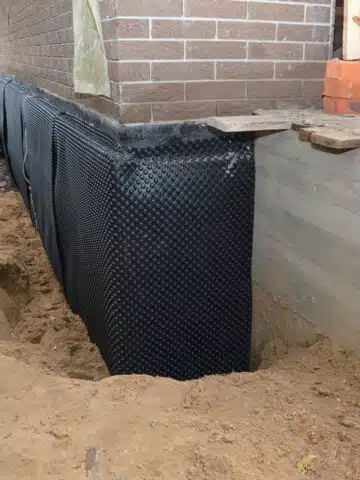Blog
Foundation Waterproofing Vs. Damp Proofing: What’s The Difference?
The foundation waterproofing and the damp proofing are two wide terms. For those navigating the world of commercial construction services, understanding the nuances between foundation waterproofing vs damp proofing is imperative. Both processes aim to protect a building’s foundation from moisture, yet they employ different methods and offer varying degrees of protection. Let’s explore this blog and briefly understand the distinctions that can help professionals make informed decisions tailored to their project’s specific needs.
Core Objectives of Each Process
At the heart of the debate between foundation waterproofing and damp proofing lies their distinct objectives. While they both revolve around the concept of moisture protection, their scopes are markedly different. Foundation waterproofing is a more intensive process, formulated with a singular aim: to form an impenetrable barrier against water. This means not only preventing the ingress of moisture in vapor form but also safeguarding against liquid water, be it from rains, groundwater, or other sources. In essence, waterproofing seeks to envelop the foundation in a protective shield, ensuring zero water intrusion.
Damp proofing, on the other hand, operates on a slightly narrower spectrum. Its primary aim is to keep out moisture vapor that can naturally emanate from the surrounding soil. By doing so, damp proofing ensures that the interior spaces remain dry, preventing issues like mold growth or damp spots. However, it’s crucial to note that while damp proofing effectively repels moisture vapor, it may not offer comprehensive protection against active water pressure or liquid water intrusion.
Materials and Methods Employed
The materials and techniques utilized in both processes underscore their differing objectives. For foundation waterproofing, the materials need to be robust, flexible, and enduring. Often, this entails the use of rubberized asphalt, thermoplastics, or high grade polymer based materials. These materials are specially engineered to withstand hydrostatic pressure, offering a steadfast barrier against water intrusion. The application process might involve the creation of a protective membrane around the foundation, ensuring that water doesn’t find an ingress point.
Damp proofing, conversely, is a bit simpler in its approach. The coatings used are typically tar or bitumen based. Their primary role is to repel moisture vapor, and they are adept at this. These coatings are applied as a thin layer on the foundation’s exterior surfaces. While effective against vapor, they might not be resilient enough to counter active water pressure. Over time, especially if constantly exposed to wet conditions, these coatings can deteriorate, emphasizing the need for periodic checks and potential reapplications.
Longevity and Durability
Foundation waterproofing, given its comprehensive nature and the robustness of materials used, tends to have a longer lifespan. It’s designed to last as long as the building stands, with minimal need for maintenance or reapplications. Damp proofing, while effective against moisture vapor, isn’t as enduring. Over time, the bitumen or tar based coatings might deteriorate, especially when exposed to prolonged moisture or changes in soil conditions.
Cost Implications
For those in the commercial construction services sector, understanding cost implications is pivotal. Foundation waterproofing, with its comprehensive protection and durable materials, comes with a heftier price tag compared to damp proofing. However, the longevity and comprehensive protection it offers can offset these initial costs over the long term. Damp proofing, while more budget friendly upfront, might require more frequent maintenance or reapplications in the long run.
Suitability Based on Soil Conditions
The surrounding soil’s moisture content and propensity to retain water can dictate which method is more suitable. Areas prone to high water tables or with clay rich soil, which retains more water, might benefit more from full fledged foundation waterproofing. Such conditions pose a more significant threat of water intrusion, which damp proofing might not sufficiently counter. In contrast, for buildings in areas with sandy or gravel rich soils, which drain water quickly, damp proofing might suffice.
Code and Regulation Compliance
Different regions have varying building codes and regulations related to foundation protection. It’s essential to consult local regulations before deciding on a method. Some areas might mandate comprehensive waterproofing, especially in flood prone regions, while others might only necessitate damp proofing.
Both foundation waterproofing and damp proofing serve the crucial role of safeguarding a building’s foundation against the detrimental effects of moisture. The decision between the two isn’t a matter of which is universally better but rather which is more suited to a specific project’s conditions and requirements. A deeper understanding of the nuances between foundation waterproofing vs damp proofing equips professionals in the commercial construction services sector to make decisions that ensure the longevity, safety, and cost efficiency of their projects.





